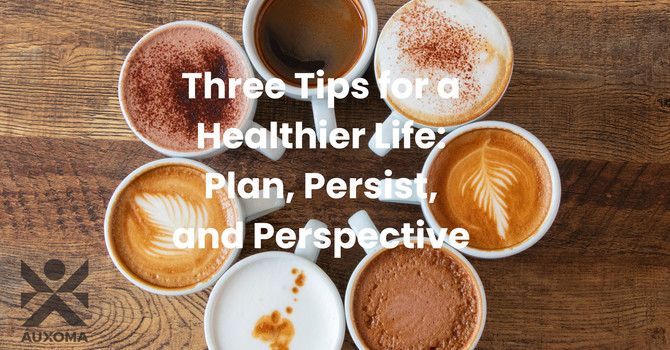
The Power of N.E.A.T. Exercise: Small Movements, Big Impact
When it comes to fitness and health, the conversation often revolves around structured exercise: hitting the gym, running a 5K, or participating in group classes. But what if I told you that one of the most significant contributors to your overall health and weight loss isn’t your hour-long workout but the seemingly insignificant movements you perform throughout the day? Enter N.E.A.T. exercise—Non-Exercise Activity Thermogenesis. Let’s dive into what N.E.A.T. is, why it matters, and how incorporating more of it into your daily routine can transform your health, weight loss, and overall well-being.
What is N.E.A.T.?
N.E.A.T. refers to the energy you expend during activities that aren’t considered deliberate exercise. Think walking to your car, fidgeting at your desk, gardening, or cooking dinner. These movements may seem trivial, but they add up over the course of a day, significantly contributing to your total daily energy expenditure (TDEE). Unlike structured workouts, N.E.A.T. isn’t about sweating it out for an hour. It’s about staying active in your everyday life, making it a sustainable and natural way to increase movement without dedicating extra time to the gym.
The Science Behind N.E.A.T.
N.E.A.T. plays a crucial role in determining how many calories you burn daily. Here’s a breakdown:
- Basal Metabolic Rate (BMR): The energy your body uses to maintain essential functions like breathing and circulation. This accounts for about 60–70% of your daily energy expenditure.
- Thermic Effect of Food (TEF): The calories burned during the digestion and absorption of food, about 10%.
- Exercise Activity Thermogenesis (EAT): The calories burned during intentional exercise, about 5–10% depending on your activity level.
- Non-Exercise Activity Thermogenesis (N.E.A.T.): The energy burned through daily, non-exercise activities. This can vary widely—from as little as 15% of daily energy expenditure in sedentary individuals to 50% in highly active ones.
Studies show that N.E.A.T. can account for hundreds of extra calories burned per day. For instance, a study published in the journal Science found that lean individuals tend to have higher levels of N.E.A.T., even when compared to overweight individuals performing the same structured workouts.
Benefits of N.E.A.T. in Daily Life
- Weight Loss and Maintenance: Weight management is all about balancing calories in versus calories out. N.E.A.T. offers a sustainable way to increase your calorie burn without drastic lifestyle changes. Simply standing more, walking during phone calls, or taking the stairs can help you burn additional calories throughout the day.
- Improved Cardiovascular Health: Regular movement, even low-intensity activity, improves blood circulation, reduces the risk of heart disease, and helps regulate blood pressure.
- Enhanced Mental Well-Being: Movement stimulates endorphin release, which can improve mood and reduce stress. Incorporating more N.E.A.T. into your day is a natural way to combat the negative effects of prolonged sitting, such as brain fog or low energy.
- Increased Longevity: Research shows that staying active throughout the day is linked to a lower risk of chronic diseases like diabetes, obesity, and metabolic syndrome. It’s not just about living longer but living better.
- Joint and Muscle Health: Regular movement helps lubricate joints, reduce stiffness, and maintain muscle tone. It’s especially beneficial for those with sedentary jobs or lifestyles.
How to Incorporate More N.E.A.T. Into Your Day
Here are some practical tips to boost your N.E.A.T.:
- Take More Steps: Set a step goal to motivate you to move more. Even short walks can add up.
- Change Positions Regularly: Use a standing desk or take standing breaks every 30 minutes. Sit on the floor in positions like criss-cross applesauce or half-kneeling. Yes, some of these positions will feel uncomfortable after a while, but that’s the point. The variety encourages more movement throughout your day, and your body will thank you.
- Active Commutes: Walk or bike to work if possible (I know, Wichita isn’t great for this ). If you drive, park farther away from the entrance.
- Household Chores: Cleaning, gardening, or even decluttering can double as calorie-burning activities.
- Fidgeting: Don’t underestimate the power of small movements like tapping your foot or stretching at your desk.
- Socialize Actively: Instead of sitting for coffee, suggest a walking meeting or stroll with a friend.
- Add Variety: Break up long periods of sitting with brief bouts of activity like stretching or taking the stairs.
How We at Auxoma Help You Incorporate More N.E.A.T.
- CARs Daily Routine: A five-minute routine to get every joint in your body moving. (Text the word CARS to 316-800-1117 for a free video.)
- Lifestyle Assessment: Reviewing your current habits to identify areas where more movement can fit naturally into your schedule.
- Targeted Rehab Exercises: Prescribed exercises tailored to areas causing your pain points. These are often done multiple times a day to not only reduce pain and achieve your goals faster but also to add more purposeful movement into your day.
N.E.A.T. vs. Structured Exercise: Why You Need Both
While N.E.A.T. is incredibly beneficial, it doesn’t replace the need for structured exercise, especially when building strength or improving cardiovascular fitness is your goal. However, the two complement each other beautifully. Structured exercise provides targeted benefits, while N.E.A.T. ensures you stay active throughout the day, avoiding the health risks associated with prolonged inactivity.
The Takeaway: Consistency Over Intensity
N.E.A.T. exercise is one of the simplest, most accessible ways to improve your health and support weight loss. It doesn’t require special equipment, gym memberships, or extra time—just a commitment to move more in your daily life. Remember, it’s not about drastic changes but consistent, small adjustments that add up over time.
Ready to Take the Next Step?
If you’re looking for ways to start playing offense against pain and get personalized strategies on how to balance N.E.A.T. with structured exercise, our team is here to help. Click here to schedule a consultation and let’s get moving—literally!
Dr. Tyler Panko
Contact Me


